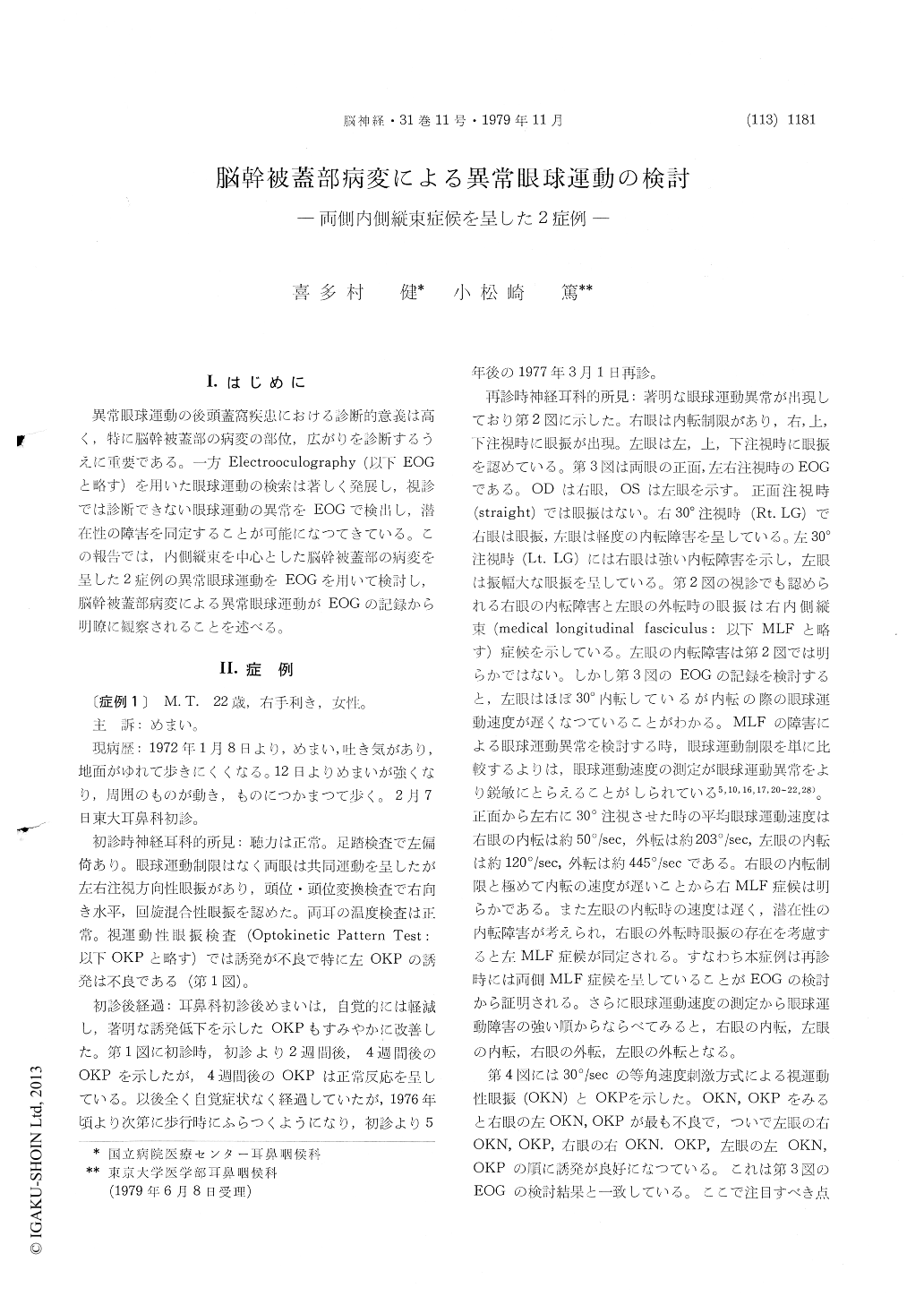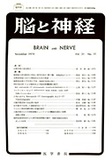Japanese
English
- 有料閲覧
- Abstract 文献概要
- 1ページ目 Look Inside
I.はじめに
異常眼球運動の後頭蓋窩疾患における診断的意義は高く,特に脳幹被蓋部の病変の部位,広がりを診断するうえに重要である。一方Electrooculography (以下EOGと略す)を用いた眼球運動の検索は著しく発展し,視診では診断できない限球運動の異常をEOGで検出し,潜在性の障害を同定することが可能になつてきている。この報告では,内側縦束を中心とした脳幹被蓋部の病変を呈した2症例の異常眼球運動をEOGを用いて検討し,脳幹被蓋部病変による異常眼球運動がEOGの記録から明瞭に観察されることを述べる。
The diagnostic values of the abnormal eye movements in the lesions of the posterior cranial fossa have been already reported. The abnormal eye movements especially in the lesions of the ponti-ne tegmentum indicate the extent and the degree of the lesions. This report describes the electro-oculographic recordings (ROG) that specify the lesions of the pons.
The electrooculographic recordings include the horizotal gaze eye movements, eye tracking tests, optokinetic nystagmus, and pendular rotation test. The velocity of eye movements is also measured and the range of eye movements is illustrated by the electrooculography. The electrooculographic recordings illustrate the dissociated movements be-tween both eyes more clearly than physical ex-aminations.
Case 1. This 22-year-old woman was examined with the complaint of gait disturbance. On ex-amination, disturbed horizontal smooth pursuit and severe suppression of optokinetic pattern (OKP) was represented. After four weeks she recovered completely with normal appearance of OKP. After five years of first examination she was examined again with the complaint of gait disturbance. The eye signs were as follows : on right lateral gaze, rightbeating nystagmus of the right eye and slightly disturbed adduction of the left eye. On leftward gaze, moderately disturbed adduction of the right eye and leftbeating nystagmus of the left eye. An incomplete bilateral MLF syndrome was present. There was additional slowing of abducting saccades of the right eye. These ab-normalities describe the lesions of the bilateral MLF and right paramedian pontine reticular formation.
Case 2. A 15-year-old girl was admitted 6 days after the insidious onset of severe headache, nausea and truncal ataxia. Ocular motor findings two weeks after admission were as follows. In forward gaze, both eyes were in the primary position. Rightward gaze elicited full abduction and right-breating nystagmus of the right eye, but the left eye did not adduct. During attempted leftward gaze neither eye could move beyond the midline. These eye movements were interpreted as combined left medial longitudinal fasciculus lesions and left gaze palsy. The next day, these ocular motor findings were greatly changed. Rightward gaze elicited the same movement that was shown the day before. But during leftward gaze, the left eye could slightly move beyond the midline and the abducted left eye showed the low frequent, left-breating nystagmus, while the right eye remained in the mid position. The disturbance of the adduction in the right eye and the leftbreating nystagmus in the abducted left eye indicates the lesion of the right medial longitudinal fasciculus.
When the unilateral horizontal gaze palsy is combined with the lesions of the contralateral MLF, it is often difficult to predict these lesions. These abnormalities which are inapparent clinically, are evidently demonstrated by EOG.

Copyright © 1979, Igaku-Shoin Ltd. All rights reserved.


